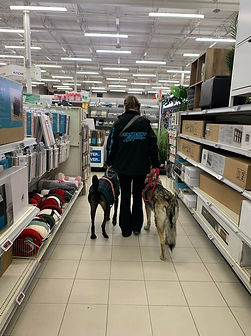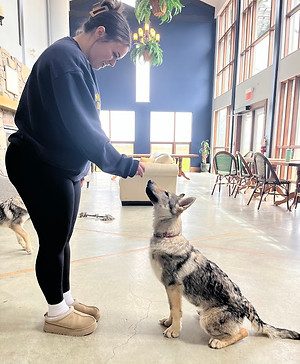
Vlcaks & Training
Things you need to know first:
-
Take the time to do it right: Training a CSV isn’t about rushing through the basics. Consistency, patience, and structure are key.
-
Be black and white: Confusion can quickly lead to frustration or even aggression. Think of it like a toddler’s tantrum but with teeth — clear rules and boundaries are essential.
-
Have a sense of humor: Training can get frustrating, so try to laugh it off and enjoy the process. CSVs can be stubborn and sneaky, but they respond best to calm, confident handling.
-
Understand their limits: While positive reinforcement is a great foundation, most CSVs will eventually need more than just treats and praise. These dogs can hit what we call the “red zone” — a level of over-arousal or frustration where soft methods won’t cut it. Structure, timing, and clear communication matter most in those moments.

Looking for the right trainer:

-
We highly recommend working with a professional trainer who understands the breed’s unique needs.
-
Do your homework:
-
Look at reviews and testimonials
-
Ask fellow CSV owners or breed clubs for recommendations
-
Interview potential trainers before committing
-
-
E-collars (electronic collars) can be effective when used responsibly and humanely. Do your research on proper use.
-
Your trainer should understand and respect the breed’s drive, intelligence, and prey instincts.
Training Styles and Techniques:
-
While positive reinforcement is valuable, many CSVs need more than just treats and praise. They are strong-willed and have a "red zone" — when they hit it, they may not respond to gentle methods alone.
-
Consistent structure and boundaries combined with motivation work best.
-
Understanding their natural instincts and drives helps tailor training — such as their prey drive, pack mentality, and pace drive.
-
Socialization is crucial — expose your CSV to many different environments, people, and animals gradually and consistently.

Questions to ask when looking for a trainer:

When interviewing trainers, consider asking:
-
Do you have experience working with high-drive breeds like the Czechoslovakian Vlcak?
-
What training methods do you use, and how do you handle stubborn or reactive behaviors?
-
Do you support the use of electronic collars? How do you ensure they are used humanely?
-
How do you handle dogs with high prey drive?
-
What is your approach to socialization and ongoing mental stimulation?
-
Can you provide references from other owners of similar breeds?
-
How do you customize training for each dog’s unique personality and needs?

